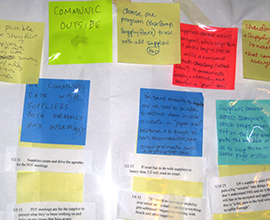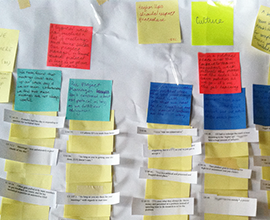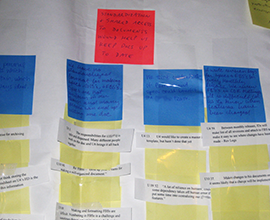Featured Activities and Deliverables:
Contextual Inquiry
In order to understand how the GM user interface team worked, and more specifically, how new ideas were generated, reported to, and captured/stored as they came up during other parts of the design cycle, our group interviewed and observed 7 team members from different organization levels using the contextual inquiry method. After each interview, our group met to hold interpretation sessions, where the group members who conducted the interview reported out their notes and experiences, which were captured into notes. These notes served as the basis for all other activities within this project. Prior to starting the interview phase of the project, our group developed an interview protocol, a redacted version of which can be seen here.Interview Protocol
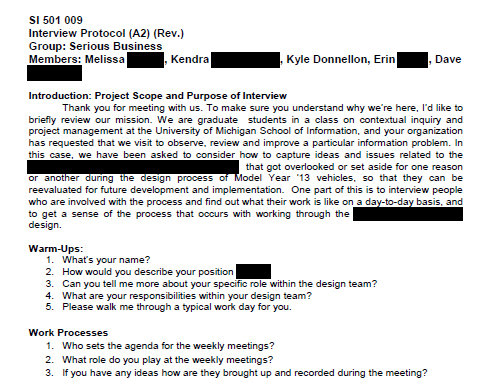
Back to Gallery
Work Model Diagrams
Information from our interview notes guided the creation of digrams representing different perspectives on the GM team's work and idea generation and capture. I created a diagram representing the flow of work surrounding one particular user, and a diagram representing cultural influences on the team at large.Single User Flow Model
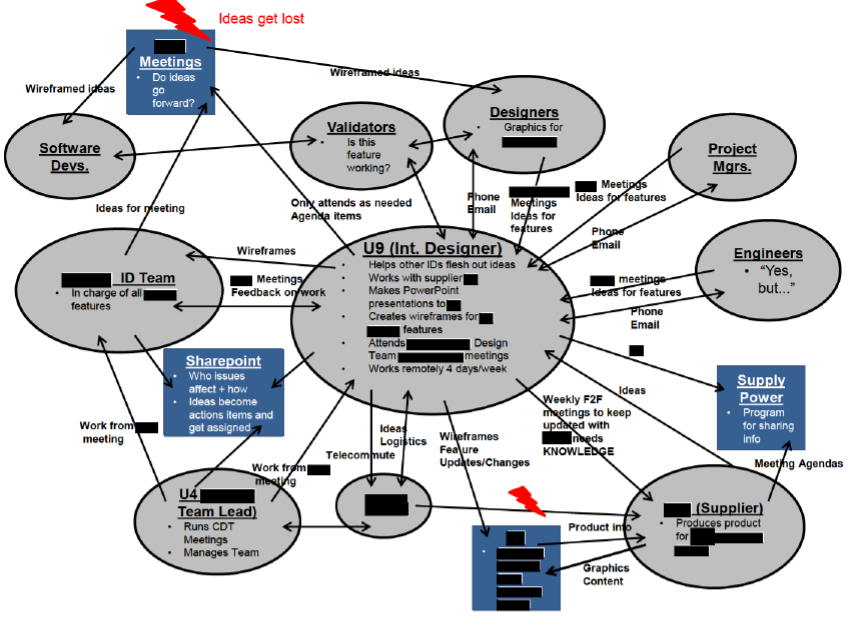
Consolidated Cultural Model
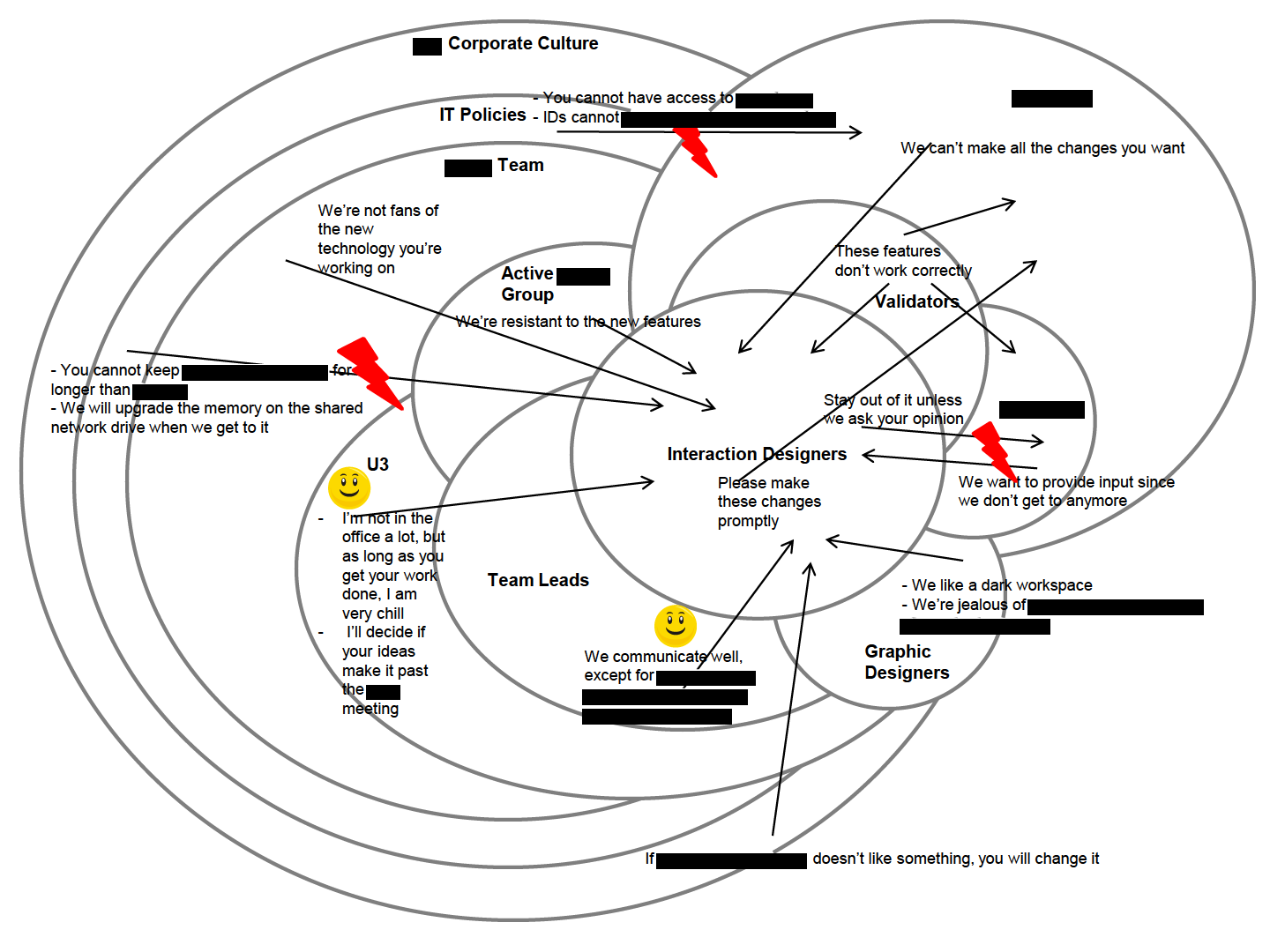
Back to Gallery
Affinity Wall
After all of the user interviews had been conducted and interpreted, we separated our notes from each interview into small information bits that could each be placed onto a Post-It note. Our group spent a large block of time over a weekend constructing an Affinity Wall. This exercise of grouping notes from across all of the interviews and identifying trends and themes was a great help in making sense of all of the information we had gathered, and helped focus our thoughts for the second part of the activity, which involved developing potential recommendations and solutions for the larger issues we identified on the Affinity Wall.